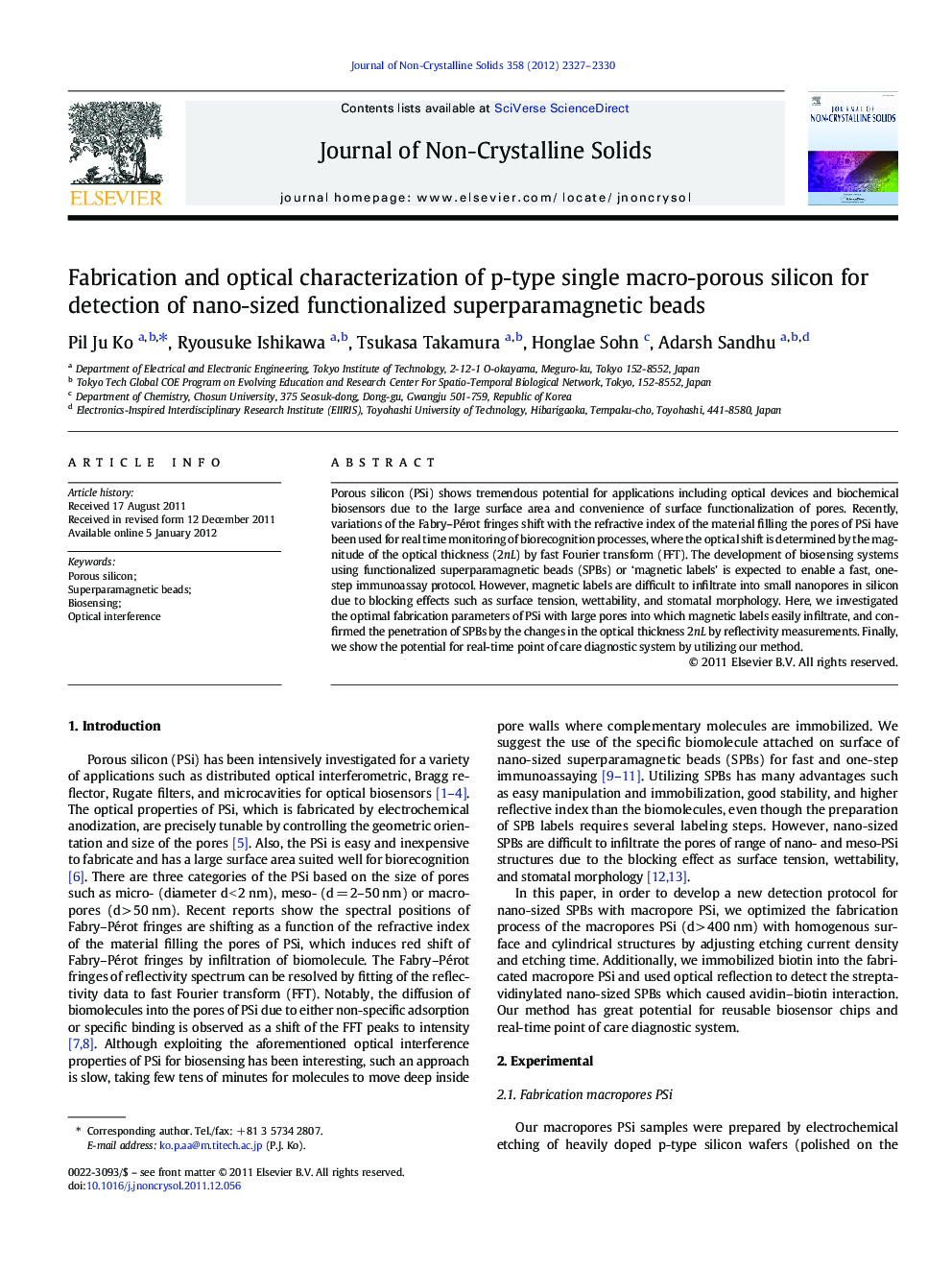| Article ID | Journal | Published Year | Pages | File Type |
|---|---|---|---|---|
| 1481731 | Journal of Non-Crystalline Solids | 2012 | 4 Pages |
Porous silicon (PSi) shows tremendous potential for applications including optical devices and biochemical biosensors due to the large surface area and convenience of surface functionalization of pores. Recently, variations of the Fabry–Pérot fringes shift with the refractive index of the material filling the pores of PSi have been used for real time monitoring of biorecognition processes, where the optical shift is determined by the magnitude of the optical thickness (2nL) by fast Fourier transform (FFT). The development of biosensing systems using functionalized superparamagnetic beads (SPBs) or ‘magnetic labels’ is expected to enable a fast, one-step immunoassay protocol. However, magnetic labels are difficult to infiltrate into small nanopores in silicon due to blocking effects such as surface tension, wettability, and stomatal morphology. Here, we investigated the optimal fabrication parameters of PSi with large pores into which magnetic labels easily infiltrate, and confirmed the penetration of SPBs by the changes in the optical thickness 2nL by reflectivity measurements. Finally, we show the potential for real-time point of care diagnostic system by utilizing our method.
► Fabrication of macro-PSi for penetration of SPBs. ► Pore size and optical properties adjusted by etching parameters. ► Optical thickness (2nL) linearly increased with etching time and current densities. ► Penetration SPBs lead to shift of optical thickness. ► Avidin–biotin interaction detected by real time monitoring the value Δ2nL.
